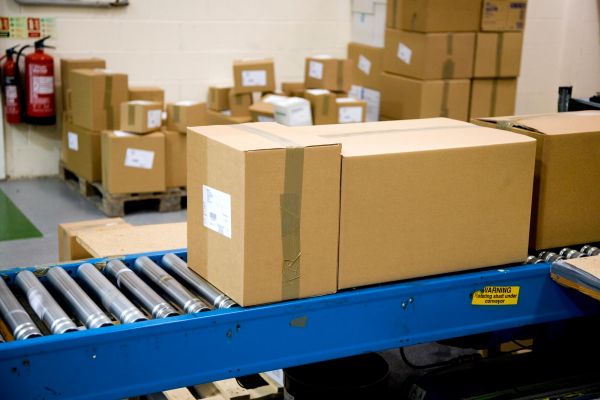Between USPS, parcel shipping services, consolidated freight, and the emergence of peer-to-peer shipping networks, it may seem like you have endless options when it comes to getting your things from Point A to Point B.
Most smaller items can be handled by USPS or parcel shipping services like Fedex or UPS, but these services often can’t or won’t ship cargo like large boxes, pieces of furniture, or unique items like antiques, artwork, or outdoor equipment. In these cases, selecting the safest shipping method can feel much murkier.
Ultimately, the right shipping method for items that can’t be shipped using USPS or parcel shipping services depends on what you’re shipping, how far you need it to go, and your budget. You will typically have two options: consolidated freight or peer-to-peer shipping.
If you’re thinking “hold on, what in the world is consolidated freight?” or “what the heck is peer-to-peer shipping?”, don’t panic—we’ve got you covered. Read on to learn the differences between consolidated freight and peer-to-peer shipping, the advantages and disadvantages of each, and when to use what service.
Consolidated freight
What is consolidated freight?
When you ship your large boxes, furniture, or other items using consolidated freight, such as less-than-truckload (LTL) shipping, your belongings will share space on the truck with other shipments heading in the same direction. You only pay for the space your cargo takes up on the back of the truck, which can save you money and help reduce your carbon footprint.
Consolidated freight is always coordinated by a professional shipping company, such as TSI. Their logistics experts will connect you with a thoroughly vetted, professional shipping provider who specializes in packing and transporting the items you need moved.
Advantages |
Disdvantages |
|---|---|
|
|
Consolidated freight shipping costs
The cost of shipping your belongings using consolidated freight is based on standardized freight classifications, which are defined by the National Motor Freight Traffic Association (NMFTA). The freight classification of your cargo depends on four factors:
- Density: The space your cargo occupies in relation to its weight. If there are no concerns about stowability, handling, or liability, density will be the most significant factor when assigning a freight class.
- Stowability: The ease or difficulty of loading and carrying your cargo onto and off of the truck.
- Handling: Some cargo requires special attention because of its weight, shape, fragility, or other safety hazards.
- Liability: The probability of theft or damage, as well as the likelihood of damage to adjacent freight.
Consolidated freight rates are also dependent on what level of service you require. Simple shipments of pre-packed boxes will cost less to ship than items like furniture, antiques, or artwork, which will require professional packing and loading services.
When to use consolidated freight
Because of the high level of service and access to a nationwide network of professional logistics providers, consolidated freight is ideal for:
- Expensive belongings, such as designer furniture or artwork
- Fragile or delicate items, such as antiques or heirlooms
- Items with great sentimental value
- Estate breakups—experienced shipping companies can help you coordinate shipments from a single point of origin to multiple end destinations
- Recurring shipments for businesses
Peer-to-peer shipping
What is peer-to-peer shipping?
Peer-to-peer shipping is like carpooling for cargo. Special online marketplaces such as uShip or Roadie connect you with people who are travelling to your intended destination and have extra space in their vehicle to carry your cargo. They could be a professional shipping company, a single-truck owner/operator, or even someone road-tripping from one place to another.
Peer-to-peer shipping networks can be used to ship just about anything, from large items to small products you can’t get in your home state.
Advantages |
Disdvantages |
|---|---|
|
|
Peer-to-peer shipping costs
When you post your shipment on a peer-to-peer shipping network like uShip, potential shipping partners will submit quotes which you can then accept, reject, or continue to negotiate.
Generally, the cost of shipping your belongings using peer-to-peer shipping will depend on how much stuff you have to move, how far it needs to go, and whether you need help packing or loading your stuff onto the truck.
When to use peer-to-peer shipping
Peer-to-peer shipping can be cheaper than consolidated freight, but it does not guarantee the same level of service or access to vetted professional shipping providers. It is ideal for:
- Inexpensive items
- Shorter distances (less than 100 miles)
- Items that are too small or which otherwise can’t be shipped using consolidated freight
Conclusion
If you have items to ship that are too large, heavy, or valuable to transport using USPS or parcel shipping services like FedEx or UPS, consolidated freight and peer-to-peer shipping are your two best alternatives.
With consolidated freight, your shipment shares space on the truck with other cargo heading in the same direction, and you’ll work with a professional logistics specialist to find an experienced, professional shipping partner who knows how to transport your cargo safely. On the other hand, peer-to-peer shipping directly connects you with others heading in the same direction as your cargo with extra space in their vehicle. This could be a professional shipping company or someone making a long distance road trip, and it’s up to you to vet their ability and expertise.
The best consolidated freight shipping companies will work with you to create a shipping plan that fits your schedule and budget. With over three decades of experience shipping just about anything across the country, TSI has the expertise and flexibility to create a personalized shipping plan that works for you. We can help you move or ship:
- Household goods, including small moves
- Antiques and heirlooms
- Artwork
- Boxes and crates
- Office equipment
- Estate breakups
- Last minute or emergency shipments




